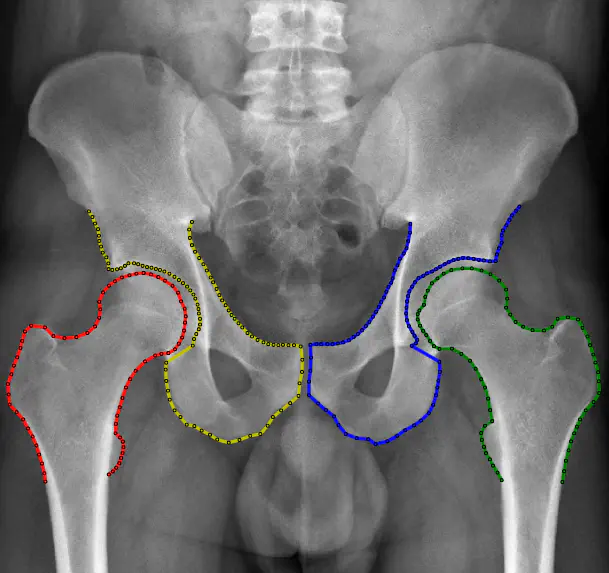
Abstract
Diagnosis of hip osteoarthritis is conventionally done through a manual measurement of the joint distance between the femoral head and the acetabular cup, a difficult and often error-prone process. Recently, Chen et al. proposed a fully automated technique based on landmark displacement estimation from multiple image patches that is able to accurately segment bone structures around the pelvis. This technique was shown to be comparable or better than state-of-the-art random forest based methods. In this paper, we report on the implementation and evaluation of this method on low-resolution datasets typically available in parts of the developing world where high-resolution X-ray image technology is unavailable. We employed a dataset of hip joint images collected at a local clinic and provided to us in JPG format and at 1/3 the resolution of typical DICOM X-ray images. In addition, we employed the Dice similarity coefficient, average Euclidean distance between corresponding landmarks, and Hausdorff distance to better evaluate the method relative to diagnosis of hip osteoarthritis. Our results show that the proposed method is robust with JPEG images at 1/3 the resolution of DICOM data. Additional preliminary results quantify the accuracy of the approach as a function of decreasing resolution. We believe these results have important significance for application in clinical settings where modern X-ray equipment is not available.